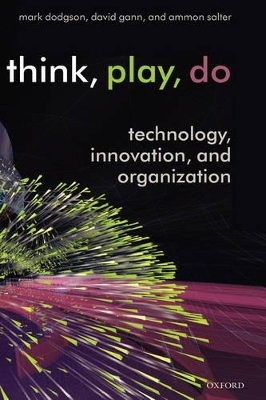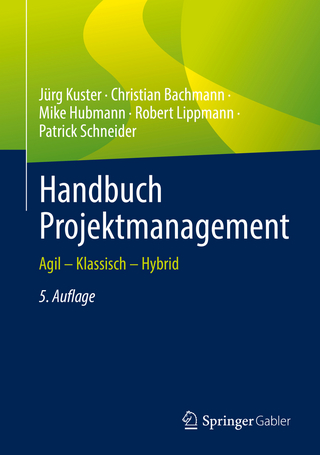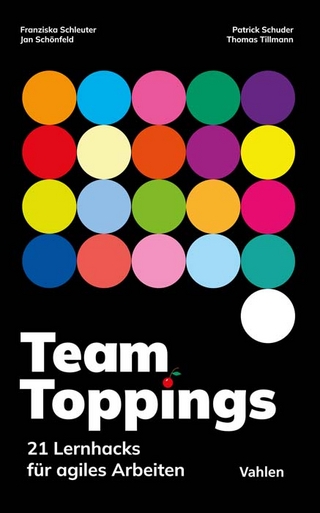
Think, Play, Do
Oxford University Press (Verlag)
978-0-19-926808-5 (ISBN)
Part of the change results from the application of new technologies to the innovation process itself. A new category of technology has emerged which we call 'innovation technology'. This includes simulation and modelling, visualization, and rapid prototyping technologies. When used effectively, innovation technology makes the innovation process more economical and ameliorates some of its uncertainties.
These technological changes are accompanied by changing organization structures and skills requirements. The technologies are used in fast moving, creative environments and are suited to project-based organization. They also require the development of new 'craft' skills to realize the possibilities created by the new 'code'.
The book outlines a new way of thinking about innovation. Traditional definitions of 'research', 'development' and 'engineering', imply a progressive linearity which doesn't exist in reality. They are also associated with organizational departments, which are breaking down where once they existed, and are in any case non-existent in the vast majority of firms. They also fail to capture the central importance of design in innovation. We propose a new schema for the innovation process: Think, Play, Do. Innovation requires creating new ideas and thinking about new options, playing with them to see if they are practical, economical and marketable, and then doing: making the innovation real. This new schema captures the emerging innovation process using a more contemporary idiom.
The book reports in-depth studies from a number of companies and sectors. Major case studies of Procter and Gamble and Arup Partners are presented. It reports on the use of innovation technology in a range of other companies and organizations, from pharmaceuticals in GSK, to engineering design in Ricardo engineering , and welding in TWI. We describe how innovation technology is used in traditional industries, such as in mining, and in public projects, such as the development of London's traffic congestion charge and the stabilization of the leaning tower of Pisa.
Mark Dodgson is Director of the Technology and Innovation Management Centre at the University of Queensland Business School, University of Queensland, Visiting Professor at the Tanaka Business School, Imperial College London, and is an International Fellow at the Advanced Institute of Management Research in the UK. He was previously Executive Director of the National Graduate School of Management at the Australian National University. Mark has lecutured and researched widely throughout Europe, North America, Asian, and Latin America, and has been an invited participant at international conferences in over 35 countries. He has been an advisor and consultant to many European Commission Programs and to numerous UK, US, European, Asian, and Australian government departments and agencies. David Gann is Head of Entrepreneurship, Innovation and Technology Management at the Tanaka Business School, Imperial College London. David holds the Chair in Technology and Innovation Management and co-directs the Imperial College Innovative Manufacturing Research Centre. He is responsible for a large portfolio of research involving collaboration with firms in design, manufacturing, engineering, construction, ICT services and healthcare industries. His research interests include the intensification of innovation, use of simulation and modelling in innovation processes, and managing innovation in project-based firms. He consults with several leading companies and is an advisor to governments and industry organisations. He previously held the Royal Academy of Engineering Chair in Innovative Manufacturing at the University of Sussex. Ammon Salter is Senior Lecturer in Technology and Innovation Management at the Tanaka Business School, Imperial College London. He is the author of several reports and articles on the sources and determinants of innovation. He was the author of the CVCP/HEFCE Report on 'Talent, Not Technology', exploring the relationship between publicly funded research and innovation in the UK. He has worked for HM Treasury on a report on the economic benefits of basic research, and was the co-author of the Russell Group of Universities report 'Measuring and Mapping Third Stream Activities'. He is currently a member of the DTI's Project Board for the development of the 4th UK Innovation Survey.
1. Innovation Technology ; 2. Understanding Innovation ; 3. Using Innovation Technology: Procter & Gamble and Arup ; 4. 'Think' ; 5. 'Play' ; 6. 'Do' ; 7. The Strategic Management of Innovation ; 8. A New Innovation Process ; Appendix: Research Method
| Erscheint lt. Verlag | 1.8.2005 |
|---|---|
| Zusatzinfo | Numerous figures and tables |
| Verlagsort | Oxford |
| Sprache | englisch |
| Maße | 163 x 242 mm |
| Gewicht | 526 g |
| Themenwelt | Wirtschaft ► Betriebswirtschaft / Management ► Projektmanagement |
| Wirtschaft ► Betriebswirtschaft / Management ► Unternehmensführung / Management | |
| ISBN-10 | 0-19-926808-8 / 0199268088 |
| ISBN-13 | 978-0-19-926808-5 / 9780199268085 |
| Zustand | Neuware |
| Informationen gemäß Produktsicherheitsverordnung (GPSR) | |
| Haben Sie eine Frage zum Produkt? |
aus dem Bereich


